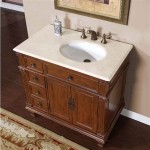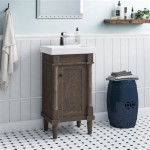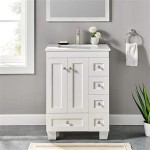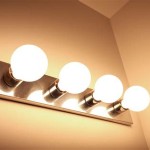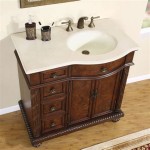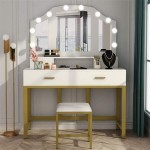30-Inch Wood Bathroom Vanity With Sink: A Comprehensive Guide
A 30-inch wood bathroom vanity with sink presents a practical and aesthetically pleasing solution for small to medium-sized bathrooms, guest bathrooms, or powder rooms. These vanities offer a balance of storage capacity and space efficiency, making them a popular choice for homeowners seeking to maximize functionality without compromising on style. The "30-inch" designation refers to the width of the vanity, a crucial dimension when planning a bathroom renovation or update. This article will delve into the various aspects of selecting and installing a 30-inch wood bathroom vanity with sink, covering material options, style considerations, installation tips, and maintenance advice.
The selection of a 30-inch wood bathroom vanity is influenced by several factors, the most prominent being the available space within the bathroom. Accurate measurements of the existing bathroom layout are paramount to ensure the vanity fits comfortably without obstructing doorways, toilet access, or shower entrances. Beyond space considerations, the overall design style of the bathroom plays a crucial role in choosing the appropriate vanity aesthetic. Modern, traditional, farmhouse, and contemporary designs each require distinct vanity styles and finishes.
Furthermore, the type of sink desired also impacts the vanity selection. Common sink types include undermount, drop-in, vessel, and integrated sinks, each requiring specific vanity construction. The plumbing configuration within the bathroom must also be considered, particularly the location of water supply lines and drain pipes, to ensure compatibility with the chosen vanity unit and sink. Finally, budget constraints inevitably influence the selection process, requiring a careful assessment of different material grades, construction methods, and brand reputations to achieve the best value for money.
Material Considerations for Wood Bathroom Vanities
The material used in constructing a 30-inch wood bathroom vanity significantly impacts its durability, aesthetics, and price. Solid wood, plywood, and MDF (Medium-Density Fiberboard) are the most common materials. Solid wood, particularly hardwoods like oak, maple, or cherry, offers the highest level of durability and a natural aesthetic. However, solid wood can be more expensive and susceptible to warping or cracking with prolonged exposure to moisture. Plywood, constructed from layers of wood veneer glued together, provides a more stable and cost-effective alternative to solid wood. High-quality plywood offers excellent resistance to moisture and warping, making it a suitable choice for bathroom environments.
MDF, an engineered wood product composed of wood fibers compressed with resin, offers a smooth surface ideal for painting or applying laminate finishes. While MDF is generally less expensive than solid wood or plywood, it is also more susceptible to water damage, especially if not properly sealed. For bathrooms with high humidity levels, choosing a vanity made with water-resistant MDF or incorporating a waterproof sealant is recommended. Regardless of the core material, the finish applied to the vanity is critical for protection against moisture. Common finishes include paint, stain, lacquer, and varnish, each offering different levels of protection and aesthetic appeal. A multi-layer finish with a water-resistant topcoat is generally preferred for longevity.
The choice of wood greatly influences the overall look and feel of the bathroom. Light-colored woods like maple and birch can create a bright and airy atmosphere, while darker woods like walnut and mahogany offer a more traditional and sophisticated look. The grain pattern of the wood also contributes to the aesthetic. Straight grain patterns provide a clean and modern appearance, while more intricate grain patterns can add character and visual interest. When choosing a wood vanity, it is important to consider the existing color scheme and design elements of the bathroom to ensure a cohesive and harmonious design.
Sink Styles and Their Impact on Vanity Design
The type of sink chosen for a 30-inch wood bathroom vanity significantly influences the overall design and functionality of the unit. Undermount sinks, installed beneath the countertop, create a seamless and easy-to-clean surface. They are often paired with solid surface or stone countertops and offer a modern and minimalist aesthetic. The vanity cabinet for an undermount sink typically features a finished interior to conceal the plumbing and provide storage space.
Drop-in sinks, also known as self-rimming sinks, are installed from above, with the rim resting on the countertop. They are relatively easy to install and offer a wide range of styles and materials. The vanity cabinet for a drop-in sink must be precisely cut to accommodate the sink's dimensions, and the rim covers the cut edge of the countertop. Vessel sinks, which sit on top of the vanity countertop, make a bold design statement. They come in various shapes, sizes, and materials, including glass, ceramic, and stone. Vessel sinks require a specialized faucet that either mounts on the countertop next to the sink or extends from the wall.
Integrated sinks, which are molded directly into the countertop material, provide a seamless and hygienic surface. They are commonly found in modern and contemporary bathroom designs and offer easy cleaning and maintenance. The choice of sink material also impacts the overall aesthetic and durability of the vanity. Ceramic sinks are a classic and durable option, while porcelain sinks offer a smoother and non-porous surface. Stone sinks, such as granite or marble, add a touch of luxury but require more careful maintenance. Glass sinks offer a unique and contemporary look but can be more fragile than other materials.
Installation and Maintenance of a 30-Inch Wood Bathroom Vanity
The installation of a 30-inch wood bathroom vanity with sink typically involves several steps, including removing the old vanity (if applicable), preparing the plumbing connections, installing the new vanity cabinet, connecting the sink and faucet, and sealing the countertop. Professional installation is often recommended, particularly for homeowners unfamiliar with plumbing and carpentry. However, with careful planning and attention to detail, a competent DIY enthusiast can successfully install a vanity. Before beginning the installation process, it is crucial to turn off the water supply to the bathroom to prevent leaks. The old vanity should be carefully disconnected and removed, taking care not to damage the surrounding walls or flooring.
The new vanity cabinet should be positioned according to the manufacturer's instructions and securely fastened to the wall studs. It is essential to ensure the vanity is level and plumb before proceeding. The plumbing connections for the sink and faucet should be carefully connected, using Teflon tape or pipe sealant to prevent leaks. The sink should be securely attached to the vanity cabinet, and the drain should be properly connected to the waste pipe. Once the installation is complete, all plumbing connections should be thoroughly inspected for leaks before turning the water supply back on. Regular maintenance is essential to prolong the life of a 30-inch wood bathroom vanity.
Cleaning the vanity with a mild soap and water solution is recommended to remove dirt and grime. Abrasive cleaners should be avoided, as they can damage the finish. Spills should be wiped up immediately to prevent staining or water damage. The wood finish should be periodically inspected for signs of wear or damage, and a fresh coat of sealant or varnish should be applied as needed. The plumbing connections should also be periodically inspected for leaks, and any necessary repairs should be made promptly. With proper care and maintenance, a 30-inch wood bathroom vanity with sink can provide years of reliable service and enhance the beauty and functionality of the bathroom.
Furthermore, choosing the correct faucet style and finish is important for both aesthetic and functional reasons. The faucet should complement the sink and vanity style and provide adequate water flow and temperature control. Consider whether you prefer a single-handle or double-handle faucet, and whether you want a traditional or modern design. The faucet finish should also coordinate with the other fixtures in the bathroom, such as the showerhead and towel bars. Common faucet finishes include chrome, brushed nickel, oil-rubbed bronze, and matte black. Always ensure the faucet is compatible with the sink's hole configuration (single-hole, widespread, or centerset).

Home Decorators Collection Moorside 30 In Single Sink Sweet Maple Bath Vanity With White Engineered Stone Top Assembled 30sm

Chester 30 Solid Wood Vanity With Quartz Countertop

Home Decorators Collection Bellington 30 In Single Sink Almond Toffee Bath Vanity With White Engineered Stone Top Assembled

James In Vanities Breckenridge 30 Single Vanity Light Natural Oak W 3 Cm White Zeus Top

30 2 Drawer Wood Vanity Single Sink What We Make

Ari Kitchen Bath Marina 30 Bathroom Vanity Driftwood Finish

Bondi 30 Single Bathroom Vanity In Light Brown With White Artificial Drop Sink

Ariel Hepburn 30 Inch Single Oval Sink Bathroom Vanity With Carrara White Quartz Countertop 1 5 Edge In Oak

Elizabeth Teak Wood 30 In W X 22 D Single Sink Bathroom Vanity Elz Tk Willow

Home Decorators Collection Autumn 30 In Single Sink Weathered Tan Bath Vanity With White Engineered Stone Top Assembled 30wt

